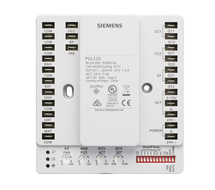
Is your economizer really working?
Did you know, according to our market research, that as many as 70% of economizer systems installed may not be functioning at optimum efficiency today? Conditions such as faulty control setting, incorrect wiring, installation, or commissioning, or rusted or jammed air dampers could be restricting the ability to experience “free cooling” in your customer’s building. A properly functioning economizer system means greater potential for energy savings. The following principles, practices, troubleshooting tips, and suggested replacement options when servicing economizer systems are intended to help you provide a sellable solution that will save money for your customer.
What exactly is an economizer system?
An economizer system is comprised of a duct and damper arrangement and automatic control system typically found in rooftop unit applications. The economizer solution allows a cooling system to supply outdoor air to reduce or eliminate the need for mechanical cooling during ideal conditions. The economizer solution also encompasses a group of sensors to test the outside air conditions to determine whether outside air is fit to be brought into the building. Depending on the control method selected, CO2, temperature, humidity, and other air characteristics are collected. The economizer controller then determines whether the air should be allowed to enter the building or not and controls the damper actuator accordingly.
Economizers reduce air conditioning costs by using outside air for free cooling. This reduces the runtime on important components of the RTU, like compressors and condensers, and lengthens the lifespan of rooftop units. In addition to mechanical energy cost savings, indoor air quality can be enhanced with an economizer system. Demand control ventilation allows CO2 levels to be monitored and outside air to be brought in when CO2 levels become too high. Depending on the type of sensor used, many conditions can be measured and monitored. These features contribute to healthier buildings and safer work environments.
Monitoring and maintaining your economizer
- Check the dampers
- Dampers are a common source of economizer problems and can sometimes get stuck, leading to the rest of the HVAC system to consume more energy by trying to compensate. Visually inspect all dampers and damper actuators to make sure the components are in working order.
- Calibrate sensors
- Sensor readings are responsible for determining when dampers should open and close and to what position. Use a high-quality measuring device to read the value on the sensor and compare that to the value read in the control system.
- Test controls and sequences
- The economizer controller needs to be commissioned correctly to be effective. Ensure the control sequence is working properly by adjusting set points based on the environmental conditions and geographic location to reach peak efficiency. Check that when the controller is calling for the dampers to be opened or closed, the proper action occurs. This is one of the most common failures in RTU economizers.
- Check filters
- Ensure that you are using the right types of filters for the application and environment. Change or clean regularly to assure efficiency as conditions vary depending on location and climate.
- Get into a routine
- Regular inspection of the economizer system and all components is a must. This includes all outdoor air and return air components. A quick monthly inspection can lead to maximum savings both in the short and long term. In addition, this will provide valuable feedback and evaluation information so that you can provide your customer with recommendations and quality service.
What if there is a need to replace the economizer system?
While there are many replacements parts available for various components of an economizer system, many are obsolete or no longer available. In this scenario, replacement or retrofit of the entire system may be necessary. The best recommendation is to replace all components, including the economizer controller, sensors, damper actuator, and thermostat to ensure the newly retrofitted system works seamlessly together. Trying to mix and match old and new components in the system is possible, but man variables come into play that causes issues.
The Siemens Economizer system can be used to retrofit any economizer in the field today. A few of the benefits of the Siemens Economizer are listed below:
-
- Utilize industry standard signal types like 0-10V, 4-20mA, etc.
- Plug-and-play without complex configuration
- Two-stage cooling control via relays
- Optimize energy control options by using demand control ventilation
- Many optional add-on products available to optimize system
- Robust design with easy to read potentiometers
- Plug-and-play Siemens OpenAir® spring return damper actuators
- Smart commissioning automatically detects signal type
- Multiple control strategies/scenarios for added flexibility






